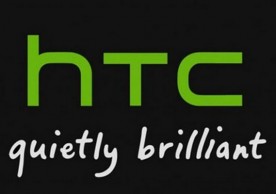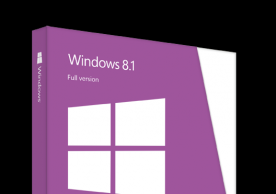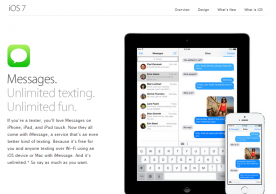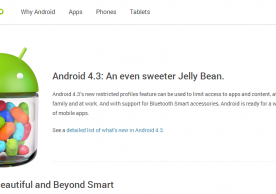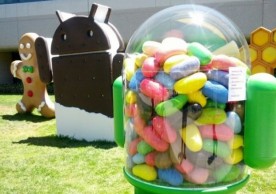Note: this article was originally scheduled for launch before Google's I/O conference, June 27.
Following on from the Samsung Galaxy S3 and Windows Phone 8 comparison, it seems logical to see how Samsung's much-sought smartphone compares to the rest of the competition. So how does Samsung, and its TouchWiz UI, compare to iOS?
Even before talking about the Samsung Galaxy S3 specifically, there's one big difference between the two mobile Oses: the respective app stores. iOS is a closed operating system, which in theory should lead to a greater quality of apps due to Apple's strict vetting process, but in turn means apps that Apple doesn't like - such as those that run closely with Apple's functionality, or those by competitors such as Google's Google Voice - may be declined.
Android is the polar opposite: users can submit many more apps, but the downside is that the quality is sometimes found lacking. However, with apps such as Flipboard coming over to Android, Google's design guidelines could be influencing iOS developers to bring high quality design to Android.
Jailbreaking and rooting are also available, but at that point it's arguably not fair to compare operating systems and phones because users install almost anything, regardless of the device. The comparison is between the stock OS experiences.
Again, before the Samsung Galaxy S3 is talked about, iOS and Android differ in the approaches towards user control. iOS is very simple: users can drag icons around individually, or collectively when grouped in a folder, and see the Weather widget when dragging the notification bar down from the top. That's basically everything, though users can change the wallpaper on the lock and/or home screen.
Android couldn't be more different because it brings all of the aforementioned iOS functionality, along with much more: widgets for any app/service can be placed on and moved around the screen, such as for YouTube or a Twitter feed; apps can be moved to anywhere on multiple screens, rather than inside a fixed grid layout; launchers can be installed to override the phone's, allowing more customization; the ability to put widgets on the lockscreen, via apps in Google Play, or download icon packs; and even the ability to change the font, despite Google loving the Roboto font introduced in Ice Cream Sandwich.
Ultimately, Android is the user's OS: it can be made to look as horrible or beautiful as possible. For those who are struggling on ideas, myColorscreen is basically Lookbook for smartphones: rather than outfits, users can share homescreens and label what was used. Skeptical? Here's an example.
A big question hanging over the Samsung Galaxy S3 is will the phone be at the forefront of Android later this year, and will future versions of Android arrive? It's difficult to answer the first part of the question because there's no word on whether Google will unveil another Nexus device, which will probably run Android Jelly Bean if unveiled and use the latest internals, but the second half is more answerable.
Samsung has been pretty late in the past when supporting future versions of Android, perhaps because it wants to maintain the experience created through TouchWiz or carriers have delayed updates. That's bad news for users getting the phone now and signing up to a two-year contract, while iOS users buying an iPhone 4/4S on a two-year contract are going to be getting iOS 6. Even users buying an iPhone 3GS will get limited functionality, something that probably can't be said of three year-old Android phones. The Galaxy S3 won't be outdated in 2012, but 2013 will bring new phones and new benchmarks.
There's also the question over what Apple is going to do with the iPhone 5, which could launch around the same time as iOS 6. The iPhone 4S was an iteration on the iPhone 4: the phone had, among other features, an improved processor and voice recognition technology Siri while maintaining the same design. Leaked images suggest Apple will redesign the back panel of the iPhone 5, perhaps to remedy the glass shattering issues, though it's not know what internals the phone will feature. The bigger question is arguably if Apple will show a redesigned iOS, which some users have called boring. The OS uses the same grid-based layout it debuted with on the iPhone, back in 2007.
Ultimately, choosing the Samsung Galaxy S3 or waiting for the next iPhone depends on what kind of operating system the user wants: iOS is closed, but more focused on the user experience, while Android lets the user control the experience. iOS is what users get; there aren't apps to install a custom launcher, or reskin an icon pack.
most read
related stories
more stories from OS / Software
-
HTC reportedly considering Android/Windows Phone dual-booting smartphone as Microsoft pushes for deeper Windows mobile integration
Microsoft has reportedly started talks with HTC to add its Windows OS to the phone maker's Android smartphones and HTC is apparently considering to make a Windows Phone/Android dual-booting smartphone.
ernest hamilton -
iOS 7 Chrome Incognito mode leaks private searches due to bug
A bug in Chrome for iOS 7 has caused Google's mobile browser to leak private searches made in 'Incognito' mode.
ernest hamilton -
Sprint HTC One Android 4.3 Jelly Bean already rolling out, AT&T, T-Mobile & Verizon to follow
HTC has announced that Sprint has already started to roll out the Android 4.3 update to the HTC One, AT&T and T-Mobile will follow in mid-October, while Verizon will release it by the end of the month.
ernest hamilton -
Microsoft Windows 8.1 now available for pre-order
The new Windows 8.1 has gone up for pre-order on the Microsoft Store, ahead of the official launch on Oct. 18.
ernest hamilton -
Apple acknowledges iOS 7 iMessage issue, promises fix via upcoming software update
Apple has acknowledged the iOS 7 iMessage issue and promised to provide a fix in an upcoming software update.
ernest hamilton -
Galaxy S4, Galaxy S3, Galaxy Note 2 Android 4.3 update rollout confirmed by Samsung Canada and French SFR
Samsung Canada and French carrier SFR have confirmed the Android 4.3 Jelly Bean rollout schedule for the Samsung Galaxy S4, Galaxy S3 and Galaxy Note 2.
ernest hamilton -
Unlocked HTC One gets Android 4.3 Jelly Bean, U.S. and Canadian versions’ update slightly delayed
The unlocked, international HTC One is getting Android 4.3 Jelly Bean now, but the U.S. and Canadian versions will 'slightly miss' the end-September timeframe.
ernest hamilton -
Samsung Galaxy S4, Galaxy S3, Galaxy Note 2 to get Android 4.3 Jelly Bean by year-end
The Samsung Galaxy S4, Galaxy S3 and Galaxy Note 2 are reportedly slated to get Android 4.3 Jelly Bean in the fourth quarter, by year-end.
ernest hamilton





